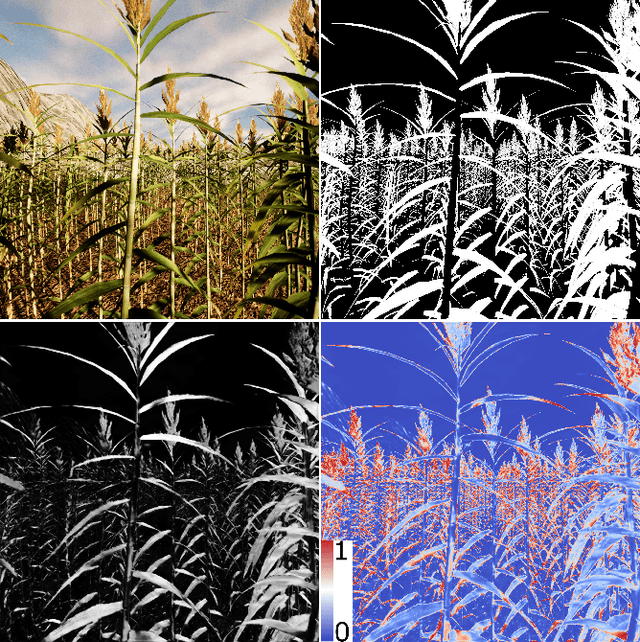Jens Henrik Göbbert
Towards prediction of turbulent flows at high Reynolds numbers using high performance computing data and deep learning
Oct 28, 2022Abstract:In this paper, deep learning (DL) methods are evaluated in the context of turbulent flows. Various generative adversarial networks (GANs) are discussed with respect to their suitability for understanding and modeling turbulence. Wasserstein GANs (WGANs) are then chosen to generate small-scale turbulence. Highly resolved direct numerical simulation (DNS) turbulent data is used for training the WGANs and the effect of network parameters, such as learning rate and loss function, is studied. Qualitatively good agreement between DNS input data and generated turbulent structures is shown. A quantitative statistical assessment of the predicted turbulent fields is performed.
Towards Large-Scale Rendering of Simulated Crops for Synthetic Ground Truth Generation on Modular Supercomputers
Oct 28, 2021

Abstract:Computer Vision problems deal with the semantic extraction of information from camera images. Especially for field crop images, the underlying problems are hard to label and even harder to learn, and the availability of high-quality training data is low. Deep neural networks do a good job of extracting the necessary models from training examples. However, they rely on an abundance of training data that is not feasible to generate or label by expert annotation. To address this challenge, we make use of the Unreal Engine to render large and complex virtual scenes. We rely on the performance of individual nodes by distributing plant simulations across nodes and both generate scenes as well as train neural networks on GPUs, restricting node communication to parallel learning.
 Add to Chrome
Add to Chrome Add to Firefox
Add to Firefox Add to Edge
Add to Edge